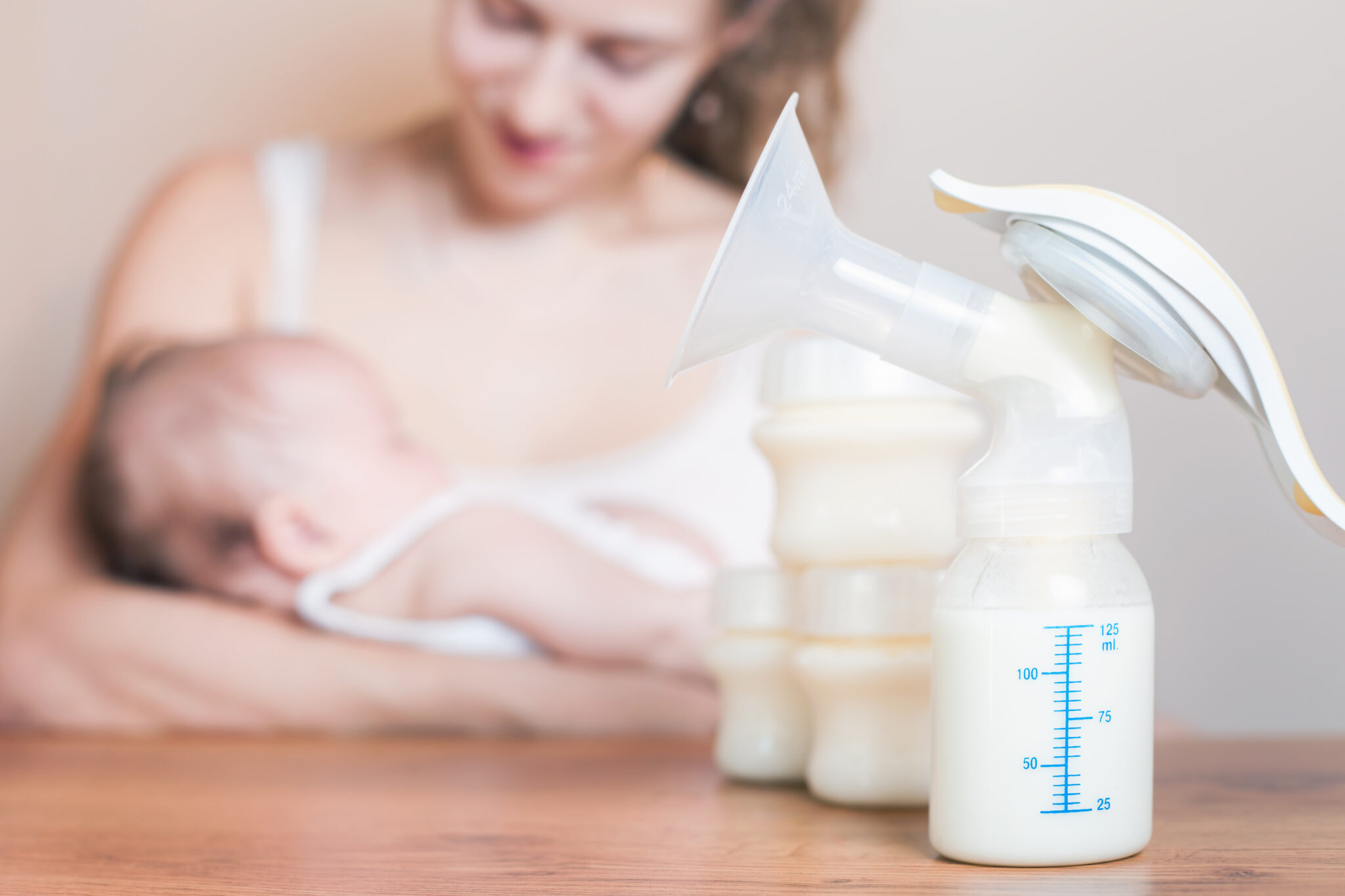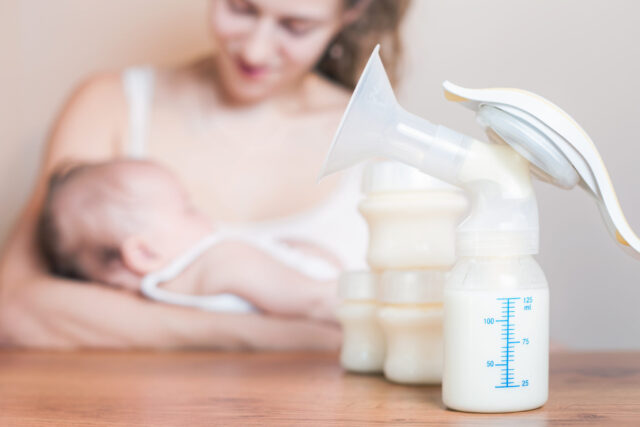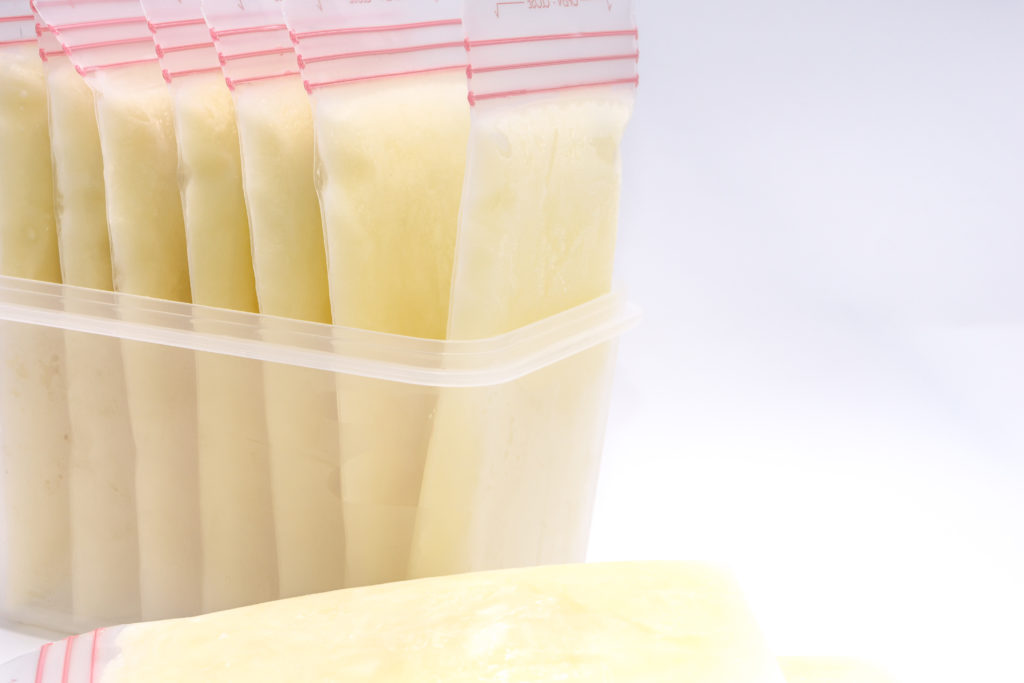Hmmm hmmm hmmm hmmm…
Shoo shoo shoo shoo…
I don’t know if anyone has figured out how to accurately describe the sound, but most breastfeeding mothers are all too familiar with the telltale hum of the electric pump. While we sometimes curse that repetitive noise while we’re hooked up to a machine that makes us feel a bit like a dairy cow, we also praise the pump for helping us continue our breastfeeding journey when we’re working outside the home, or exclusively pumping by need or by choice. That trusty pump is there for us when we want to make sure our babies have our liquid gold when we happen to be separated for more than a few hours.
I returned to work full time when my oldest son was four months old, and I wanted to continue to exclusively breastfeed him as I had done during my maternity leave. To do that, I knew pumping would become a second job, a task I’d have to perform diligently every 2-to-3 hours at work to make sure I maintained my milk supply and had milk to send to daycare the next day.
Sure, there were times when I wanted to quit from exhaustion and got tired of stepping away from my desk at 10:30 a.m. sharp each morning to get my pump session in. Washing multiple bottles every night wasn’t fun either – but nevertheless, I persisted, and before I knew it, his first birthday had arrived. (For good measure, I pumped for three more months after that – he loved his mama milk!)
Just when I thought I was done, three years later I was at it again with my second son, pumping at work for a little over a year to supply his needs when I was away.
Pumping is breastfeeding! Don’t think that you can’t meet your breastfeeding goals if you choose to (or have to) return to work after giving birth. There are plenty of benefits to being a pumping mama, and here are some tips, tricks, and hacks I learned along the way.
All pumps aren’t the same.
We’ve come a long way from the days when a breast pump looked like a bicycle horn. There are electric double pumps, manual hand pumps, milk catchers that can be placed on the breast to catch leaks, and cups worn under your clothes that can extract milk while you complete your daily routine. See what your insurance will cover and ask your friends for recommendations. Also, consider getting both manual and electric pumps if you can. Don’t assume that electric is always the best option – some mothers swear by the manual pump and get more milk that way.
Don’t fear the output.
What you pump doesn’t necessarily equal how much milk you actually make — what you see in those bottles is only indicative of what you can pump. Your baby will get more milk nursing directly from the breast, so don’t freak out if you pumped only two ounces — it’s possible your little one drank 3-4 ounces during a nursing session. Also, don’t be alarmed if you pump after nursing to store milk and only extract an ounce. That probably means your baby had a full meal at the boob and removed the milk she needed, giving you “leftovers” when you pumped.
Change your parts.
This one is so important. So many mamas in social media breastfeeding support groups swear they’re drying up because they start pumping less milk after their baby turns six or nine months. With my first baby, I started wondering at nine months where my milk supply had gone, as my trusty double electric pump was only giving me about one ounce per breast when I previously could get two or three.
I looked at the valves one day (the little white or yellow rubbery things) and saw some small tears. No wonder I wasn’t getting much out! I went to my local store and bought a new set immediately and ordered more on backup. After replacing the parts, the next day I was back to my usual output and I went on to pump just fine for another few months.
Trust that your body didn’t come this far to fail you now and don’t stop breastfeeding before you’re ready to wean because of a mechanical issue that can be remedied. Did you know that you need to change your duckbill valves every 60-80 pumping sessions? If you’re pumping 2-3 times a day during the week, that equates to changing them every month or two. (Exclusive pumpers might need to change them every two weeks.)
Take some of your pumping time to read the manual – I bet it tells you to change your parts!
Other tips.
You changed your pump parts; you faithfully pump every three hours at work every day and you still are seeing a supply decrease. What gives? If your menstrual cycle has started, try a calcium/magnesium supplement, as the drop in your blood calcium levels can lead to a temporary supply dip in some women. Baby still will get all he or she needs from the breast, but your cycle might affect your pump output.
Don’t fret about a large freezer stash either. Pump a few bags before you return to work to have enough (1-1.5 ounces per hour) for your baby’s time with a caregiver, but if you pump regularly each day, you’ll have more than enough. I think I only had 30 ounces saved on my first day back to work.
Pumping mamas, we salute you! I can probably go the rest of my life without hearing a machine whoosh, murmur, mumble or whisper at me ever again, but I thank my pump for its contribution toward helping this working mama get the breastfeeding job done.





Leave a Reply